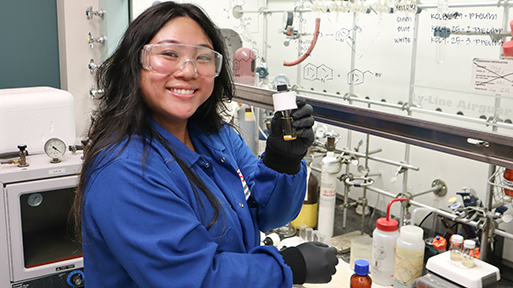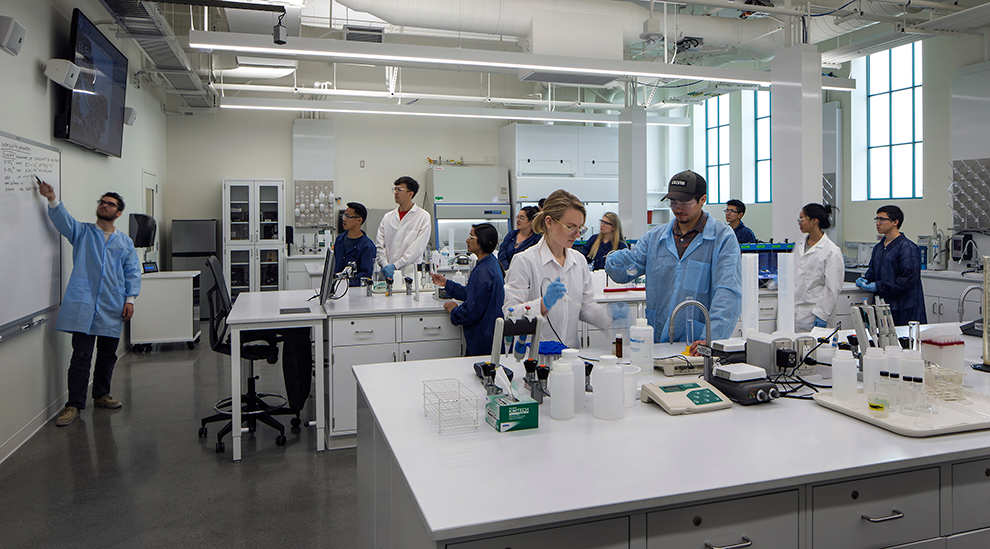'Promotoras' Help Latinas Get Fit
A study of the community health model shows increased fitness and reduced blood pressure in participants.

The Latino community has long suffered from low rates of physical activity and high rates of obesity and chronic disease. A research center headed by San Diego State public health professors aims to fix that problem with a community-based program that has already shown positive results. Those results are published online today and will be in the December issue of American Journal of Public Health.
The San Diego Prevention Research Center (SDPRC) created “Familias Sanas y Activas” (“Healthy and Active Families”) in 2006 to promote physical activity and healthy habits among Latino residents in South San Diego County. The program trains members of the community, known as promotoras, to teach free physical activity classes within their local community.
"Promotoras" are described as members of the community who have been identified as natural leaders and are interested in making positive changes in people’s lives. They have compassion and empathy for community residents, and they reflect who the community is.
“The promotora model is pretty well-known and there is a lot of evidence in favor of it as community-based model for health promotion,” said Guadalupe X. Ayala, Co-Director of the SDPRC and professor of public health at SDSU. “These are action-oriented people who want to make a difference.”
Physical activity among Latinos low, obesity high
Within the Latino community, physical activity rates are low — 50–60 percent of those living in the United States get no physical activity — and obesity rates and incidents of diabetes are high.
“This problem isn’t going away,” Ayala said. “Obesity rates in children keep increasing, especially in the Mexican-American community. If parents are modeling inactivity, what hope do we have for these kids?”
Familias Sanas y Activas is the main project of the SDPRC, an academic community partnership initially funded in 2004-2009 by the Centers for Disease Control and Prevention (CDC). Directed by John Elder, also of SDSU, the SDPRC is one of 37 Prevention Research Centers (PRCs) across the country. The goal of the CDC’s PRC Program is to build the evidence of effective health promotion efforts and to translate research into practice in the community more quickly.
The SDPRC—the only PRC in California that focuses on Latinos and the only national PRC that is fully funded to focus on Latinos—partnered with four organizations (Casa Familiar, San Ysidro Health Center, Villa Nueva Apartments Social Services Agency, and the Chula Vista Department of Recreation) to collaborate on Familias Sanas y Activas. Each organization selected 2 Trainers, who helped identify and train the promotoras.
“Our promotoras included a variety of individuals from a national basketball team member from Mexico to someone who had never been physically activity,” Ayala said.
The community health program is just one example of how the university engages the San Diego region, a key initiative of the Campaign for SDSU. Whether it’s supporting programs that contribute directly to San Diego's growth or building academic programs to prepare for the region’s future, SDSU is an important community partner. Learn more about SDSU’s community engagement and how you can contribute.
Group exercise effective
Thirty group exercise instructors made a one year commitment, and during that period they received several phases of training before offering physical activity classes twice a week. This resulted in roughly 25–30 free physical activity classes per week for the community.
Although only Latinos were evaluated for the study, the classes were open to people of any ethnicity. Researchers recruited over 387 people to participate in the evaluation, where they were assessed on a variety of criteria, including their blood pressure, weight, aerobic fitness, flexibility, among other measures at baseline and then six and 12 months out.
“We really achieved some meaningful changes in terms of fitness and blood pressure,” Ayala said. “This group moved from pre-hypertensive to a normal blood pressure range. We also saw increases in flexibility, overall fitness, decrease in waist circumference, decrease in depression and more positive perception about physical activity.”
As the second cycle got underway with renewed funding (for 2009–2014), a new community partner, the Chula Vista Community Collaborative, and the addition of funded Site Coordinators at each partner agency, the SDPRC obtained feedback from promotoras and participants to make improvements. There was a unanimous decision that the services offered should not stop at physical activity, and should rather take on a more holistic approach. So they expanded to offer healthy lifestyle classes to improve nutrition, emotional health and sleep habits.
Norma Mazariegos, one of the promotoras, got involved in the study because she enjoyed exercising and maintaining a healthy lifestyle for herself, as well as her family and participants.
“The experience for me has meant a lot. I feel happy when I see my participants improving their health. In addition, I saw changes in my own. I used to suffer from arthritis in both knees and thanks to exercising, I no longer have pain and I feel much better.”
Participants lost weight, went off meds
Norma saw her class grow from just eight people to 60. Although some were timid and reluctant at first, she motivated them and helped them become more confident and fit. Her participants not only lost weight, but some also no longer needed to take hypertension and cholesterol medicines.
Marisela Fernandez, one of Norma’s participants, heard about the class from her niece and started attending to alleviate stress at work. She has participated in the program for 1 ½ years and feels more relaxed, full of energy and healthier. Marisela credits Norma for this improvement, showing just how important promotoras are to improving health within their community.
“My instructor is a lovable person who inspires confidence and has helped me overcome my fear of dancing and improved my emotional health. Now instead of being irritable, I am happier and more relaxed.”
The combination of promotoras engaging with community members and researchers evaluating those results is a model the SDPRC believes works well in the Latino community, and one that can lead to significant positive change.
Ayala added, “This is a great example of how the community can take ownership of a problem, work with a university and create real changes in the population’s health.”
Support SDSU's Graduate School of Public Health




